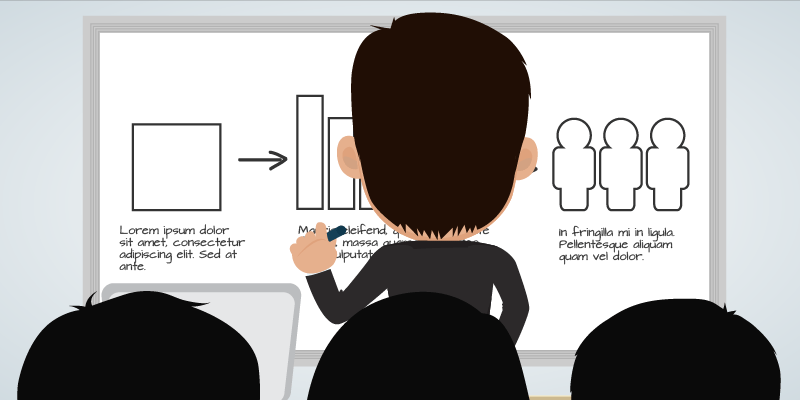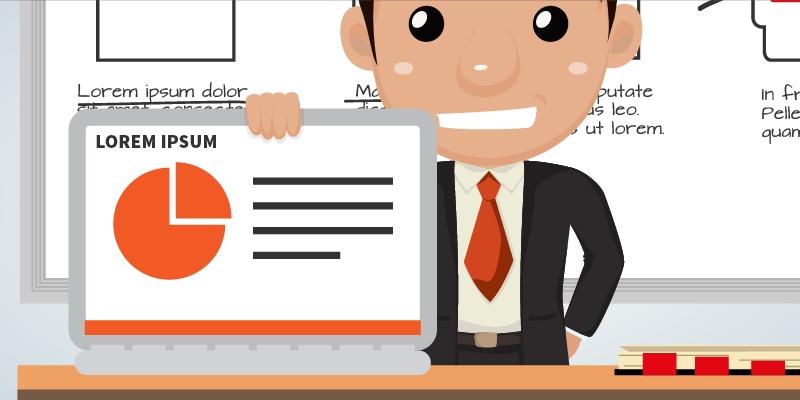In a highly competitive environment, only the best businesses survive. You’ll have a harder time establishing your own brand in an already crowded market. But what if you create your own niche, a place that only you have total control over?
The blue ocean strategy, or the creation of an uncontested market, aims to do just that. This business strategy was derived from W. Chan Kim and Renee Mauborgne’s book of the same name. However, the danger of innovation is in the high risk you’ll be taking. There’s a possibility that people may or may not take the bait, leaving you with a failed project. When you introduce your product or service to the market, it still needs to appeal to people.
Fortunately, we’ve listed down three steps to effectively drawing prospects into your blue ocean during a sales presentation:
Blue Ocean Strategy
1. Specify
The key to any successful sales presentation is to map out a concrete plan.
Although a blue ocean strategy aims to disrupt the industry with a new product, you can’t just jump in blindly without considering a few important things. These include your business objectives and your target market’s needs and wants. You can’t leave any loopholes or be vague about your offered features.
Have a clear vision of what you want to do. Doing this helps your audience better grasp your main point because you’re introducing something that these people haven’t heard of before.
If you’re still working on a general idea, Katherine Arline’s article on Business News Daily elaborates on Blue Ocean Strategy’s concepts. This includes the book’s four-action framework to help you flesh it out. There are four key objectives in this framework, namely:
- Raise the industry’s standard
- Eliminate outdated factors
- Reduce those factors
- Create a new space in the market
Answering each consideration, in turn, gives you a better view on the logistics and feasibility of your overall plan.

2. Strategize
Now that you have your content in place, it’s time to strategize how you plan to sell it. Even the most revolutionary product will go to waste if you can’t convince anyone to invest in it.
One way to get people’s attention is to align your objectives with theirs. Researching your audience will go a long way towards determining prospects’ needs and wants. This may mean you’ll have to tweak your initial plan for better marketability.
Another possibility is to observe and follow current trends in the existing market. This makes your product target specific people with existing biases that make them ideal prospects. Knowing their interests is important for successfully convincing them of your product’s benefits.
As a guideline, you can follow the AIDA method. With this, your main goal is to attract the audience, interest them in your offer, convert that interest into desire, and eventually lead them into action.
3. Act
After strategizing, you’re ready to present your product. Similar to other styles, presenting a blue ocean is convincing people of its benefits compared to existing products. On the other hand, its advantage is that it can cater to something that has never been tackled before.
Apply your research in real life by crafting your speech around it. An audience will be drawn in by something that benefits them and piques their interest.
Make sure you have good visuals to back you up. A good slide deck is needed to complement your enthusiasm and creativity. A boring pitch deck with too much text and unappealing graphics might turn off your prospects. Get inspiration from color psychology and other graphic design principles that can elevate your content’s appearance.
Considering these three measures can make your pitch engaging and keep people’s attention much longer.
Summing It Up
Reaching out to a specific target market can be difficult, but making one for yourself is even more challenging. Here’s a review of how to prepare a powerful sales presentation and make your own niche market:
- Make your product as specific as possible by having set goals and an outline on achieving it.
- Align your product with your prospects’ interests to strategize your plan of action.
- Prepare a speech backed up by extensive research and let your slide deck support your content.
If done well, pulling off a blue ocean is a gratifying experience for any business that can bring you a lot of profit.

Download free pitch deck templates now.
Get professionally designed pitch deck slides weekly.
Sign Up NowReferences:
Arline, Katherine. “Blue Ocean Strategy: Creating Your Own Market.” Business News Daily. April 1, 2015. www.businessnewsdaily.com/5647-blue-ocean-strategy.html
“What Is Blue Ocean Strategy?” The Wall Street Journal. n.d. guides.wsj.com/management/strategy/what-is-blue-ocean-strategy
Featured Image: “Blue Ocean” by Andrea on flickr.com























